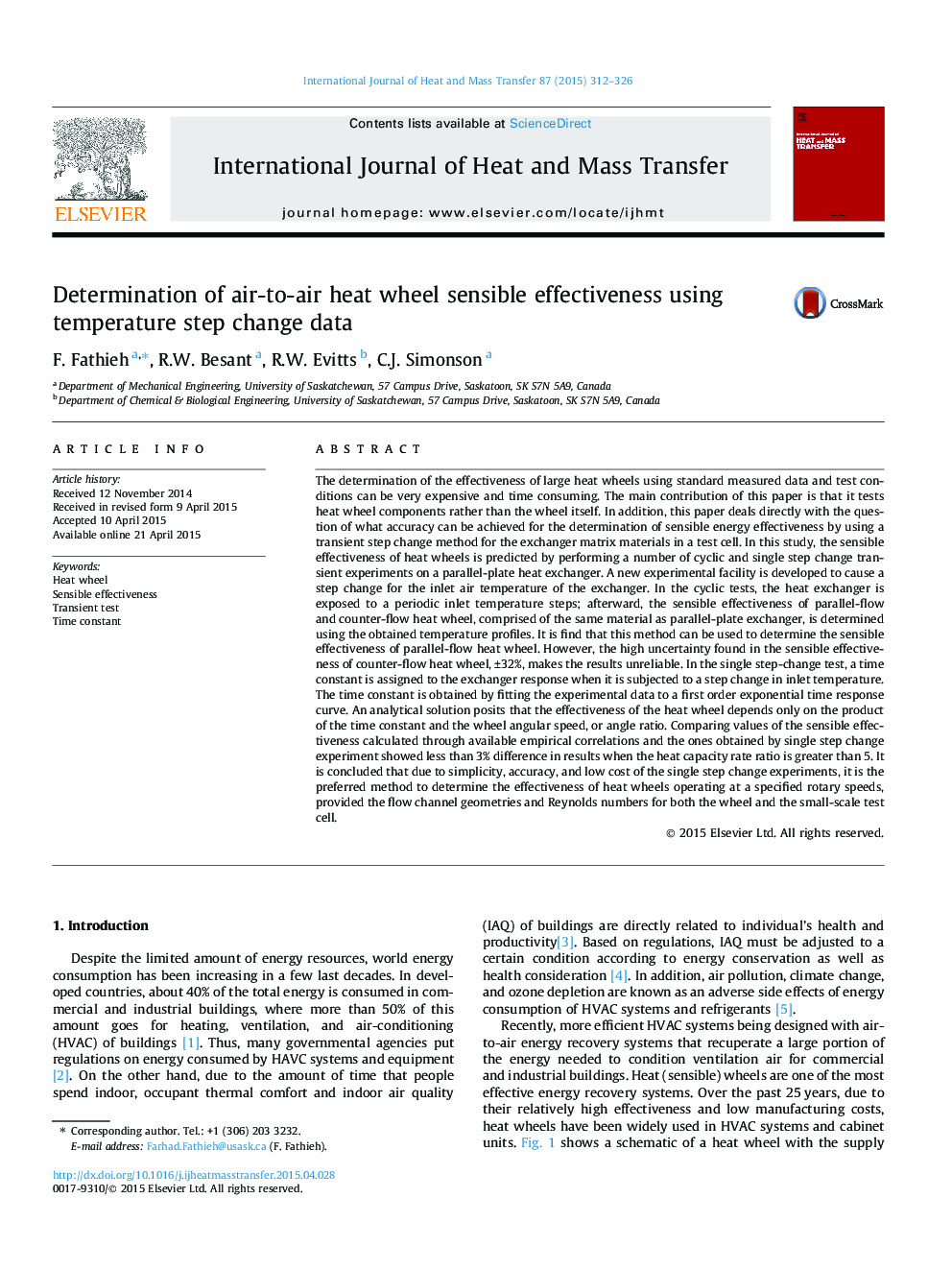| کد مقاله | کد نشریه | سال انتشار | مقاله انگلیسی | نسخه تمام متن |
|---|---|---|---|---|
| 657119 | 1458055 | 2015 | 15 صفحه PDF | دانلود رایگان |
عنوان انگلیسی مقاله ISI
Determination of air-to-air heat wheel sensible effectiveness using temperature step change data
ترجمه فارسی عنوان
تعیین اثربخشی حساس به هوای هوا به هوا با استفاده از داده های تغییرات دمایی
دانلود مقاله + سفارش ترجمه
دانلود مقاله ISI انگلیسی
رایگان برای ایرانیان
کلمات کلیدی
چرخ حرارتی، اثربخشی معقول، تست گذرا، ثابت زمانی،
موضوعات مرتبط
مهندسی و علوم پایه
مهندسی شیمی
جریان سیال و فرایندهای انتقال
چکیده انگلیسی
The determination of the effectiveness of large heat wheels using standard measured data and test conditions can be very expensive and time consuming. The main contribution of this paper is that it tests heat wheel components rather than the wheel itself. In addition, this paper deals directly with the question of what accuracy can be achieved for the determination of sensible energy effectiveness by using a transient step change method for the exchanger matrix materials in a test cell. In this study, the sensible effectiveness of heat wheels is predicted by performing a number of cyclic and single step change transient experiments on a parallel-plate heat exchanger. A new experimental facility is developed to cause a step change for the inlet air temperature of the exchanger. In the cyclic tests, the heat exchanger is exposed to a periodic inlet temperature steps; afterward, the sensible effectiveness of parallel-flow and counter-flow heat wheel, comprised of the same material as parallel-plate exchanger, is determined using the obtained temperature profiles. It is find that this method can be used to determine the sensible effectiveness of parallel-flow heat wheel. However, the high uncertainty found in the sensible effectiveness of counter-flow heat wheel, ±32%, makes the results unreliable. In the single step-change test, a time constant is assigned to the exchanger response when it is subjected to a step change in inlet temperature. The time constant is obtained by fitting the experimental data to a first order exponential time response curve. An analytical solution posits that the effectiveness of the heat wheel depends only on the product of the time constant and the wheel angular speed, or angle ratio. Comparing values of the sensible effectiveness calculated through available empirical correlations and the ones obtained by single step change experiment showed less than 3% difference in results when the heat capacity rate ratio is greater than 5. It is concluded that due to simplicity, accuracy, and low cost of the single step change experiments, it is the preferred method to determine the effectiveness of heat wheels operating at a specified rotary speeds, provided the flow channel geometries and Reynolds numbers for both the wheel and the small-scale test cell.
ناشر
Database: Elsevier - ScienceDirect (ساینس دایرکت)
Journal: International Journal of Heat and Mass Transfer - Volume 87, August 2015, Pages 312-326
Journal: International Journal of Heat and Mass Transfer - Volume 87, August 2015, Pages 312-326
نویسندگان
F. Fathieh, R.W. Besant, R.W. Evitts, C.J. Simonson,
